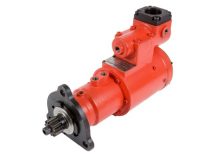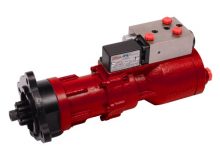Pre-engaged starter motors and ATEX
The goal of the ATEX safety standard is to remove the risk of fires or explosions being caused by an accidental source of ignition. For an engine starting system to meet this goal it has to use a pre-engaged starter motor.
Pre-engaged starter motors are specifically mentioned in both BS EN 1834-1:2000 and BS EN 1834-2:2000, two of the standards on which ATEX is built. These standards say:
“mechanical starters shall be of the pre-engaged type”
- For an engine starting system to meet this goal it has to use a pre-engaged starter motor.
- BS EN 1834-1:2000 and BS EN 1834-2:2000, specifically recommend pre-engaged starter motors.
But what is the difference between an inertia and pre-engaged starter motor? And why do inertia starters struggle to achieve ATEX approval? Let us explain by outlining how each system works.
Inertia Starter Motor
Inertia starters have long been the tried and tested method of engine starting. They work by rotating the pinion at high speed. Centrifugal force then moves the pinion forward until its reaches the ring-gear. As it spins, the teeth of the pinion lock onto the ring-gear and crank the engine.
As soon as the firing speed has been reached, the pinion returns to its disengaged position. This method of engagement is simple, proven and reliable. However, it does have the potential to cause a spark when the spinning pinion makes impact with the stationary ring-gear. This makes it difficult to classify inertia starters as safe in a hazardous environment according to ATEX regulations.
Pre-engaged Starter Motor
For a starter motor to be ATEX-approved there can be no possibility of sparks. A pre-engaged starter motor achieves this by engaging the pinion with the ring-gear before it rotates. The starter motor is fitted with a relay valve which controls the movement of the pinion. When the starter motor is activated the pinion moves along the shaft until it comes into contact with the toothed ring-gear.
The pinion is then interlocked with the ring-gear before rotating to crank the engine.
As the engine gets up to speed the pre-engaged starter motor is protected from overspeed by a free wheel clutch (like the free wheel gear of a bicycle). At this stage the return spring retracts the pinion to its disengaged position.
Safety is critical when working in hazardous environments. IPU’s pre-engaged starter motors conform to ATEX standards.


